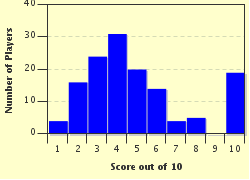Quiz Answer Key and Fun Facts
1. Christopher Columbus set sail for the New World with three ships. Which one did he command?
2. Ferdinand Magellan commanded the first fleet to circumnavigate the globe. What was the name of his ship?
3. Henry Hudson set out to discover the Northwest Passage. What was the name of the ship in which he made his last attempt?
4. Chay Blyth was the first to sail single-handed, non-stop, in a westerly direction around the world. What was his boat called?
5. Sir Francis Drake was one of England's greatest sailors (or pirates, depending on your point of view). What was the name of the ship in which he fought the Spanish Armada?
6. Lord Louis Mountbatten commanded a ship in WW2, that inspired a film made by Noel Coward. What was his ship called?
7. Lord Howard of Effingham was the Admiral of the Fleet at the time of the Spanish Armada. What was the name of his flagship?
8. Captain James Cook was the famous explorer who mapped the Pacific and the coast of Australia, and was the first to circumnavigate New Zealand. What was the name of his ship?
9. William Bligh was the captain of a ship that was the subject of a famous mutiny. What was her name?
10. Robin Knox-Johnston was the first person to sail non-stop and single-handed around the world. What was the name of his boat?
Source: Author
invinoveritas
This quiz was reviewed by FunTrivia editor
stedman before going online.
Any errors found in FunTrivia content are routinely corrected through our feedback system.


